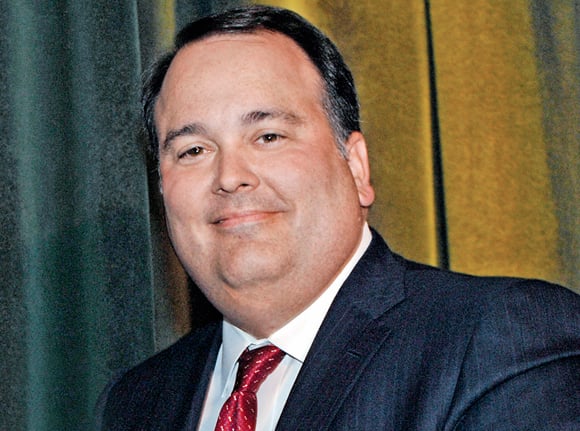LPL Investment Holdings Inc. will look to recruit at least 400 net new registered reps and investment advisers this year and into the future, while top executives at the firm acknowledge that attracting top brokers is getting more expensive.
The cost of bringing independent contractor reps and advisers to LPL has recently increased, LPL chief executive Mark Casady said in an interview today. Mr. Casady was making his first public statements about LPL since its initial public offering in November,
in which he sold $58 million of company stock.
While wirehouses have offered upfront bonuses of 200% to 300% of a rep’s prior year’s production, independent broker-dealers — which pay reps a much higher commission rate — typically have offered far less in upfront money.
“Historically, it’s been about seven cents on the dollar, and now it’s maybe 10,” Mr. Casady said. “The overall average has gone up, and there are definitely some cases, particularly with multimillion-dollar practices,” that skew the figures of the average deal, he said.
LPL’s range for upfront money on average has been between 6% and 12% of a broker's prior year's fees and commissions, Mr. Casady said.
LPL’s competitors keep a close eye on the firm and how it recruits brokers and advisers, especially the number of brokers it brings on and the upfront recruiting bonuses it pays.
Over the past decade, LPL was a recruiting juggernaut, growing from 3,596 reps and advisers to 12,000.
(See how other indie-B-Ds compare to LPL’s rep count.) The firm offered its shares to the public in November, and currently has a market capitalization of
$3.65 billion.
Eighty-percent of the firm’s growth last decade came from recruiting, Mr. Casady said, with the rest coming from about half-a-dozen acquisitions of reps from broker-dealers. At the end of last year, it closed the acquisition of assets from National Retirement Partners Inc. and acquired 206 advisers focusing on retirement planning.
Mr. Casady acknowledged that the firm’s overall head count was “flat” at the end of September. That, however, didn’t mean LPL had an off-year in recruiting, he said.
About 720 brokers left in the first nine months of 2010, which was due to the integration of broker-dealers acquired in 2007 onto LPL’s platform. Those brokers were replaced by 750 new brokers — and their production far outstripped those that left, Mr. Casady said.
The brokers that left averaged less than $50,000 per year in fees and commissions, while those that joined averaged $250,000 to $350,000 in fees and commissions, he said. That represents “inherent growth” in the coming months and years for LPL, Mr. Casady said. “That will provide some really nice growth for us on a going-forward basis.”
He declined to recruiting numbers for the fourth quarter. LPL will report its head count of advisers when it releases its earnings Feb. 7.
LPL saw a pickup in interest from wirehouse advisers, starting in the middle of 2010. Many brokers at the major wirehouses took retention or “stay bonuses” in 2009, Mr. Casady noted, and as advisers work those bonuses off over time, they are more inclined to contemplate changing firms.







